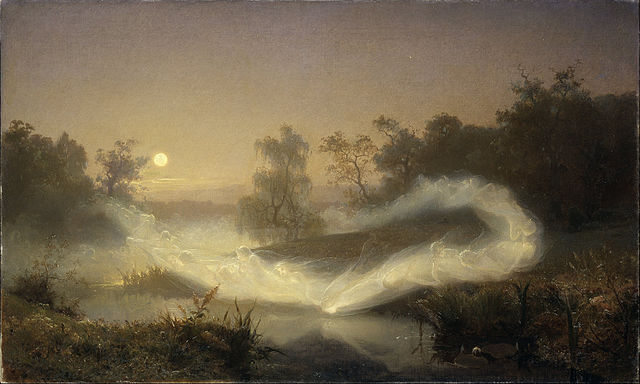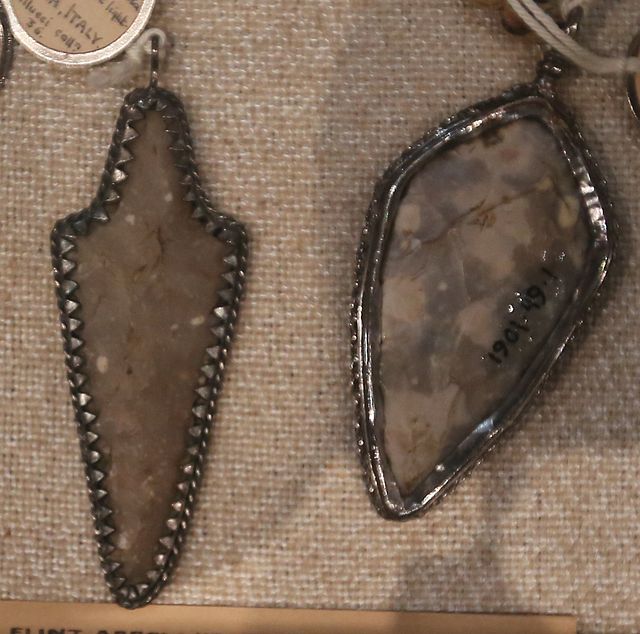In J. R. R. Tolkien's legendarium, the Elves or Quendi are a sundered (divided) people. They awoke at Cuiviénen on the continent of Middle-earth, where they were divided into three tribes: Minyar, Tatyar and Nelyar. After some time, they were summoned by Oromë to live with the Valar in Valinor, on Aman. That summoning and the Great Journey that followed split the Elves into two main groups, which were never fully reunited.
Elves were associated with light or darkness in Norse mythology. 1866 painting Elfplay by August Malmström
In J. R. R. Tolkien's writings, Elves are the first fictional race to appear in Middle-earth. Unlike Men and Dwarves, Elves are immortal, though they can be killed in battle. If so, their souls go to the Halls of Mandos in Aman. After a long life in Middle-earth, Elves yearn for the Earthly Paradise of Valinor, and can sail there from the Grey Havens. They feature in The Hobbit and The Lord of the Rings. Their history is described in detail in The Silmarillion.
Victorian era Fairy painting: Edwin Landseer, Scene from A Midsummer Night's Dream. Titania and Bottom, 1851
Beowulf's eotenas [ond] ylfe [ond] orcneas, "ogres [and] elves [and] devil-corpses", inspiring Tolkien to create orcs, elves, and other races
Elf-shot, associated with "elf arrows", neolithic flint arrowheads sometimes used as amulets, was one of the hints Tolkien used to create his Elves.
Wood elves as portrayed in the 1977 Rankin-Bass version of The Hobbit look nothing like those in any other adaptation.



![Beowulf's eotenas [ond] ylfe [ond] orcneas, "ogres [and] elves [and] devil-corpses", inspiring Tolkien to create orcs, elves, and other races](https://upload.wikimedia.org/wikipedia/commons/thumb/c/cd/Beowulf_eotenas_ylfe_orcneas.jpg/640px-Beowulf_eotenas_ylfe_orcneas.jpg)

